

LIFE
FORCE
The magazine of the photo-essay

June 2017 back issue
by Narciso Contreras

Libya
A Human Marketplace
“A free, really high quality photo-essay magazine. Fabulous!”
Stephen Fry. British actor, writer and film & documentary maker

Exhibition at the Saatchi Gallery
London
16 May - 16 June 2017
Free admission
Fondation Carmignac is pleased to announce the exhibition of the 7th Laureate of the Carmignac Photojournalism
Award, the Mexican photographer Narciso Contreras.
This report narrates the thoughts and observations of the photojournalist as he has travelled through the complex
tribal society of post-Gaddafi Libya from February to June 2016, photographing the brutal reality of human trafficking.
Contreras lays bare an unfolding humanitarian crisis in which illegal migrants, refugees and asylum seekers are at the
mercy of militias who exploit them for financial gain. Held in detention centres for illegal migrants, they are subjected to
inhumane conditions including overcrowding, lack of sanitation and vicious beatings.
Throughout this report, Contreras weaves a compelling narrative to show how, instead of being a place of transit for
migrants on their way to Europe, Libya has actually become a trafficking market where people are bought and sold on
a daily basis.
In 2009, Fondation Carmignac established the Carmignac Photojournalism Award with the aim of funding and
promoting an investigative photo report on human rights violations each year. The winner receives a €50,000 grant to
produce an in-depth, in-the-field photo essay. After it has been completed, the Fondation provides further support,
financing a monograph on the investigation and working with the photographer to develop and stage an international
touring exhibition that begins in Paris. Four photos from the essay are subsequently included in the Carmignac
Collection.
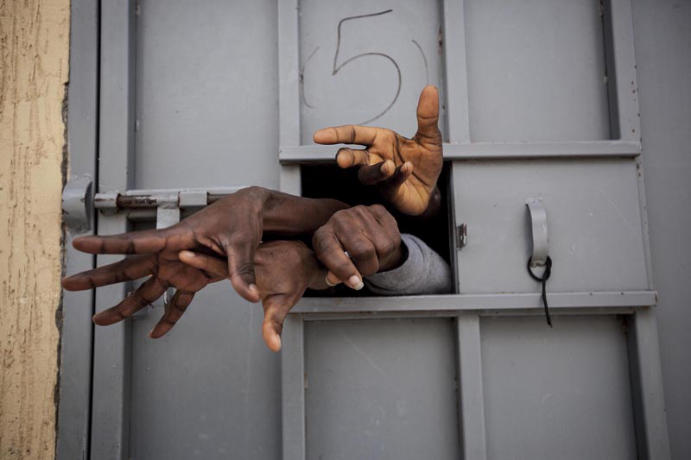
Sub-Saharan illegal migrants and refugees reach through the window of a cell in the Garabuli Detention Centre,
pleading for water, cigarettes, food and their release. Garabuli, Libya.
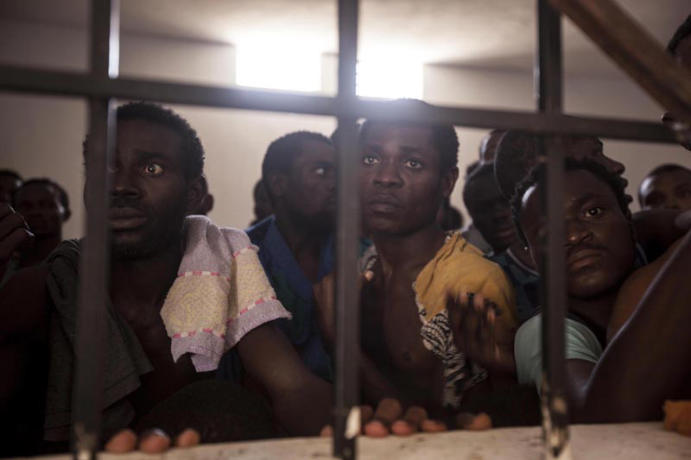
Sub-Saharan illegal migrants and refugees are pictured begging for their release in one Surman Detention Centre. The
Centre's Director (not pictured) stands in front of the cell, threatening to beat them with a stick if they do not calm down.
The detainees freeze in panic. Surman, Libya.
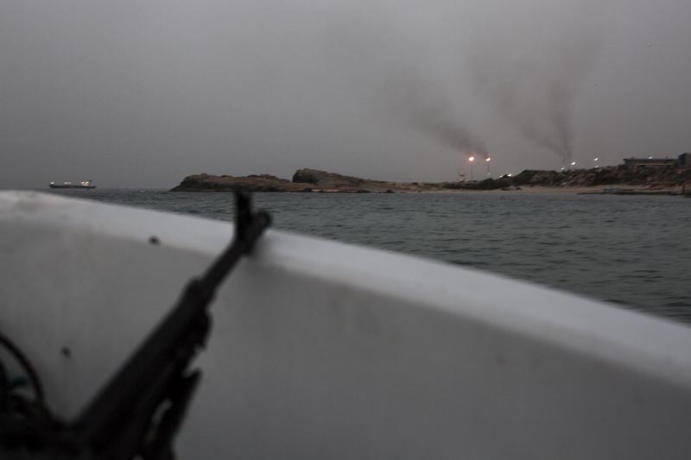
The Zawyah refinery is seen from a boat during surveillance operations carried out by the coastguard in the west of
Libya. Zawiyah, Libya.
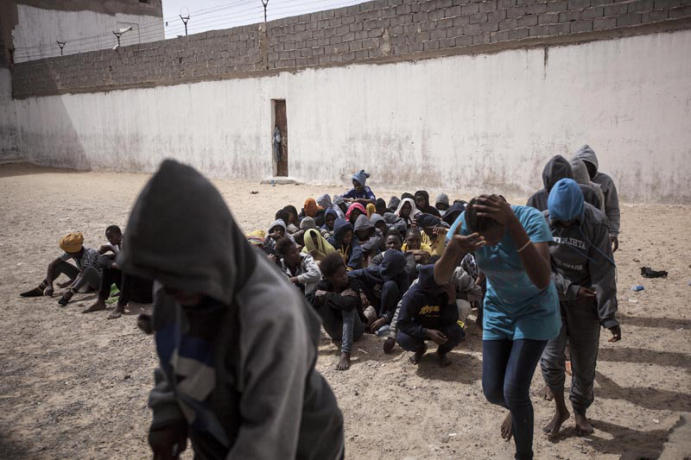
Illegal female migrants queue in the prison yard as they are loaded onto buses to be transferred to another detention
centre, after having been sold by the militia group ruling the Surman detention camp in the west of Libya. Surman.
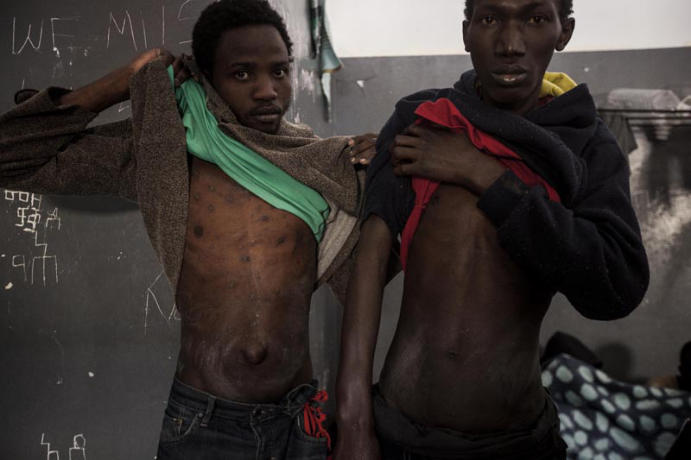
Sub-Saharan illegal migrants reveal their skin diseases and signs of beatings allegedly caused by the guards at the
Garabuli Detention Centre of Libya. Garabuli, Libya.
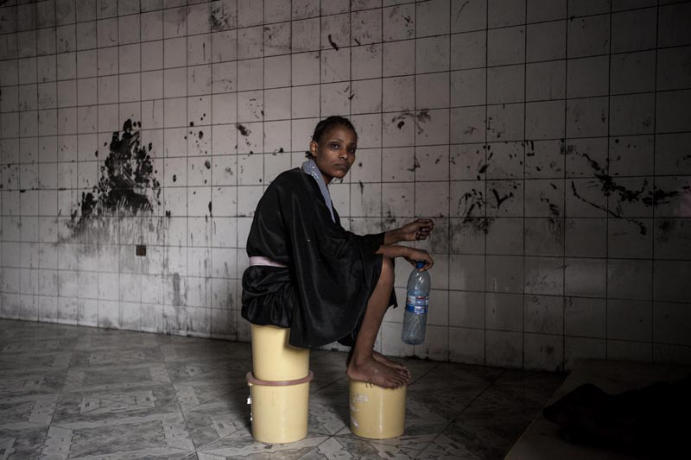
A mentally-ill Sub-Saharan illegal migrant in isolation in one of the Surman detention centers for illegal migrants on the
west coast of Libya. Surman, Libya.
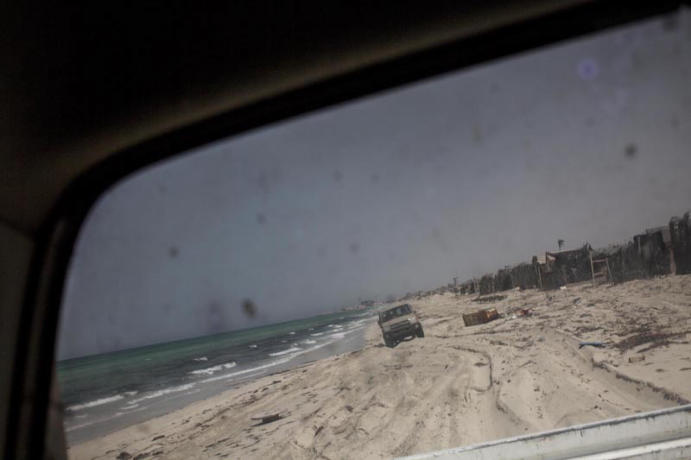
A vigilante group carries out surveillance operations on the Zawara shore, looking for the corpses of illegal migrants
and refugees, which have been washed up by the tide during the night. Two-hundred and twenty-six bodies of illegal
migrants, asylum seekers and refugees were washed up on the Zuwara and Sabratah shores the week after their boats
sank in the Mediterranean. Twenty-six pregnant women and one toddler were among the dead. Zawara, Libya.
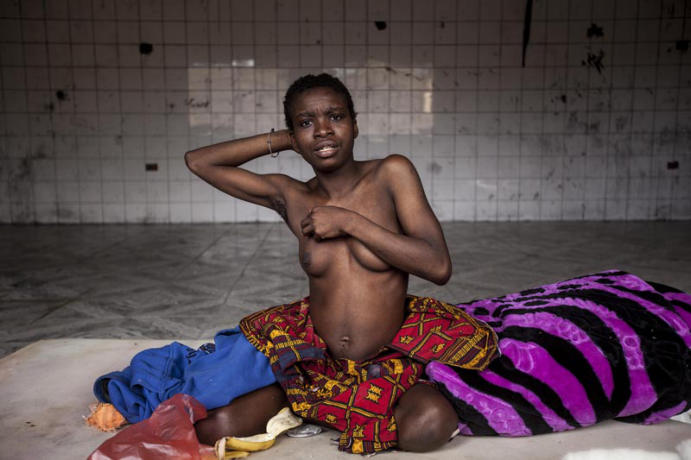
An unidentified mentally ill Sub-Saharan illegal migrant strips inside an isolated cell in a Surman detention center,
revealing an abortion scar on her belly. A local doctor says that the woman, presumably a rape victim, has been
detained for the last two years. When asked about the woman’s scar he replies that it is unclear if she became
pregnant whilst in custody, or beforehand. Surman, Libya.









